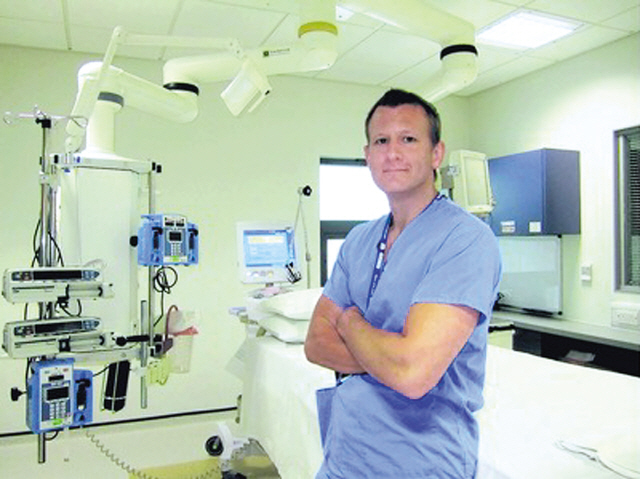How much do you know about sepsis?
Probably not many Koreans are aware of the illness since the government has designated sepsis vaccination as mandatory. The threat and fear of sepsis is very low here.
Still, there is always a chance of contracting the disease as improper wound or injury management can easily lead to it.
Dr. Ron Daniels, a specialist physician at Critical Care and Anaesthesia and CEO of the Global Sepsis Alliance, shared some information about sepsis in his written interview with The Korea Herald.
Q: What is sepsis? How does it occur?
A: Sepsis is a life threatening condition that arises when the body’s response to an infection injures its own tissues and organs.
Sepsis leads to shock, multiple organ failure and death especially if not recognized early and treated promptly. Sepsis remains the primary cause of death from infection despite advances in modern medicine, including vaccines, antibiotics and acute care. Millions of people die of sepsis every year worldwide.
If diagnosed and treated in the first hour following presentation with sepsis, the patient has more than an 80 percent survival rate. After the sixth hour, the patient only has a 30 percent survival rate.
 |
Dr. Ron Daniels, CEO of the Global Sepsis Alliance (Image provided by GSA) |
It’s crucially important that the early symptoms of sepsis are recognized by both the public and the healthcare sector and treatment accessed, where possible, within the first hour ― the “Golden Hour.” If it is, then the risk of death from sepsis is halved.
Q: Is there a bias according to physical condition or environment of a person?
A: Sepsis can strike at any age and does not discriminate by race, general health status or economic or environmental circumstance.
While sepsis affects hundreds of thousands of children, pregnant mothers and other young, fit adults every year, the risk is greatest in areas where general hygiene and sanitation are poor and at the extremes of age.
In an aging society, an increase in the use of aggressive and invasive treatments, particularly amongst procedures for the elderly such as hip replacements, can cause an increase in cases of sepsis.
Q: How is sepsis treated?
A: The simplest interventions ― early delivery of the right antibiotic and intravenous fluids ― are the most effective.
Q: Is there a way to eradicate it?
A: Awareness is the number one cure for sepsis. Raising recognition of the disease and increasing the number of patients treated in the “Golden Hour” is the single biggest attempt we can make to save lives.
Q: How can we prevent sepsis and lower the numbers affected by it?
A: To reduce the incidence of sepsis, we must ensure that access to basic preventative measures is improved worldwide.
Vaccination programs against infections caused by certain viruses and bacteria need to be more widely available and uptake more reliable. Lack of basic sanitation and public and personal hygiene play a significant part as causative factors in sepsis, some of which can be addressed through education alone.
The important thing is that excessive use of antibiotics when they might not be needed, both in humans and in farm animals and agriculture, tends to select more resistant and deadly forms of bacteria and must be controlled.
By Bae Ji-sook (
baejisook@heraldcorp.com)







![[Today’s K-pop] Blackpink’s Jennie, Lisa invited to Coachella as solo acts](http://res.heraldm.com/phpwas/restmb_idxmake.php?idx=644&simg=/content/image/2024/11/21/20241121050099_0.jpg)
